Synergistic Research Active Grounding Block SX by Michael Girardi
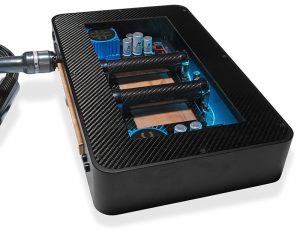
Precision in Leading Edge Transients
 Once in a while, you get that itch to try something new. It happened with the introduction of the Synergistic Research Master Fuses. I called Andy Wiederspahn, President of Synergistic Research, my go-to guy at SR, to inquire about all of the hype on the net concerning the Master Fuses. After a brief discussion with Andy, I had a 4A slow blow Master Fuse to try on my Ayon Audio S-5 Network Player/Preamp/DAC. I know this is a Grounding Block and HDG cable review, but let me digress.
Once in a while, you get that itch to try something new. It happened with the introduction of the Synergistic Research Master Fuses. I called Andy Wiederspahn, President of Synergistic Research, my go-to guy at SR, to inquire about all of the hype on the net concerning the Master Fuses. After a brief discussion with Andy, I had a 4A slow blow Master Fuse to try on my Ayon Audio S-5 Network Player/Preamp/DAC. I know this is a Grounding Block and HDG cable review, but let me digress.
I have had all the SR fuses over the years, with each fuse delivering incremental improvements in sound quality, but the Master Fuse is on a whole new level. Before testing the SR Master Fuse, my digital system, which consists of several high-end components, was fitted with SR Purple Fuses, which was well spent to achieve optimal audio system performance. I don’t believe in purchasing audiophile fuses for $5000 each based on their ultimate use as a consumable product. Still, in a world of $5000 fuses, I found the SR Master Fuse to be a “practical” solution and ear-opening endeavor as installed in my Ayon Audio S-5 Network Player/DAC/Preamp. After some break-in, the increase in soundstage separation and transient attack over the SR Purple Fuse was easy to discern. In fact, throughout the entire frequency range, my system sounded clearer and smoother, adding to the sonic realism. The liveliness in the recording was all there while being displayed faithfully to the recording source. For what a single Master Fuse does, it’s well worth the price and was found to complement the existing SR fuses in my system. Adding SR Master Fuses to my First Watt SIT-1 monoblocks was equally effective and, in some ways, greater than the sum of three Master Fuses. After giving this feedback to SR, Andy offered to send me the latest SR Active Grounding Block SX and the latest SR High-Definition Grounding cables to evaluate for review.
Ground is a connection to earth in many circuit designs but is not always optimized in its implementation. The ground connection provides a path for dissipating electrostatic interference and buildup and, when designed properly, can address internal component EMI and RFI issues. The AGB SX provides an additional conductive path of least resistance for ground, separate from what is provided by your components and power cables, and acts to remove the internally generated RFI and EMI noise within the component.
 The Active Ground Block SX is a technological trickle-down of the cost-no-object Galileo Active Ground Block plus new technologies that were not developed when SR first engineered the Galileo Active Ground Block. The chassis construction starts as a solid billet of aluminum machined to its final shape. Carbon fiber is added to lower RF interference and provides mechanical rigidity. The power supply design implemented in the AGB SX also trickles down from the SR linear power supply. Proprietary grounding technology related to the harmonics of the Schuman Resonance was also included in the AGB SX. Ten additional grounding points were added to the AGB SX as compared to the AGB SE. Additional specification details of the AGB SX can be found on the SR website.
The Active Ground Block SX is a technological trickle-down of the cost-no-object Galileo Active Ground Block plus new technologies that were not developed when SR first engineered the Galileo Active Ground Block. The chassis construction starts as a solid billet of aluminum machined to its final shape. Carbon fiber is added to lower RF interference and provides mechanical rigidity. The power supply design implemented in the AGB SX also trickles down from the SR linear power supply. Proprietary grounding technology related to the harmonics of the Schuman Resonance was also included in the AGB SX. Ten additional grounding points were added to the AGB SX as compared to the AGB SE. Additional specification details of the AGB SX can be found on the SR website.
Applications for the AGB SX include (High Definition Grounding cables are optional):
·Synergistic Research Galileo UEF and Atmosphere Cables
·Synergistic Research Tranquility Bases
·Synergistic Research Atmospheres
·Turntables – Standard or Small Spade Connect to Ground Post on Turntable
·Phono-stage – Standard or Small Spade Connect to Ground Post
·Digital to Analog Converters (DACs) – Connect to spare Digital Input, Output or Chassis Ground
·Reel to Reel Tape – Connect to spare Analog Input, Output or Chassis Ground
· Preamplifiers – Connect to spare Analog Input, Output, or Chassis Ground
·Power Amplifiers – Connect to spare Analog Input, Output, or Chassis Ground. Note: Many power amplifiers will sound best without the ground engaged. Try your power amp and speaker cables with and without the ground attached, and choose what sounds best for your system.
·USB Devices – Connect to spare USB Input, Output or Chassis Ground
·Audio Computers – 3.5mm Headphone Jack
·Any Component with an active circuit inside – Connect to spare Input, Output, or Chassis Ground
 If you can remember, I was the first to write a review of the SR Grounding Block’s first iteration, which debuted in July 2015 (here), and a follow-up review of the SR HDG cables in December of that year. Three years later, I reviewed the SR Active Grounding Block SE (here). Over the years of reviewing Ted Denney’s creations, I have learned that Denny wouldn’t come out with a new version of a product such as the Active Grounding Block SX unless it significantly outperformed its predecessor. In my system, I connected the AGB SX to the following components: SR PowerCell Sx, SR Galileo SX interconnects, Ayon Audio S-5 Network Player/DAC/Preamp, AfterDark Server, Google Fiber modem/router, chassis grounds on the AfterDark Clock, Farad Super3 LPS, and Ayon Audio Odin MKIII DHT SET amplifier. This review will compare the Active Ground Block SE to the latest AGB SX model with the latest High-Definition Grounding cables installed.
If you can remember, I was the first to write a review of the SR Grounding Block’s first iteration, which debuted in July 2015 (here), and a follow-up review of the SR HDG cables in December of that year. Three years later, I reviewed the SR Active Grounding Block SE (here). Over the years of reviewing Ted Denney’s creations, I have learned that Denny wouldn’t come out with a new version of a product such as the Active Grounding Block SX unless it significantly outperformed its predecessor. In my system, I connected the AGB SX to the following components: SR PowerCell Sx, SR Galileo SX interconnects, Ayon Audio S-5 Network Player/DAC/Preamp, AfterDark Server, Google Fiber modem/router, chassis grounds on the AfterDark Clock, Farad Super3 LPS, and Ayon Audio Odin MKIII DHT SET amplifier. This review will compare the Active Ground Block SE to the latest AGB SX model with the latest High-Definition Grounding cables installed.
Grounded in Music
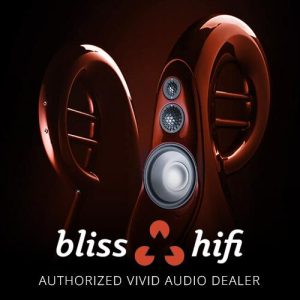 My digital-based system is rather complex, so I thought I would detail the component chain from start to finish here: Google Fiber router (main) – both the battery-powered Fidelizer AirStream2 router (access point) and AfterDark Project ClayX Roon KARMANN Music Server plugged into the A side of the Uptone Audio EtherREGEN switch – AfterDark Double Emperor Crown Master Clock powered by a Farad Super3 lps plugged into the B side of the ER – Waversa EXT Reference LAN filter – AfterDark Project ClayX Giesemann Rosanna Network Bridge powered by a Farad Super3 lps – Ayon Audio S-5 Network/DAC/Preamp Player connected through the I2S input. My system includes the Ayon Audio Odin III Build 4 DHT amplifier and the crossoverless Cube Audio Nenuphar loudspeakers. My listening area is 14′ x 10′ wide with a 9‘ ceiling and has a nearly open back wall to 1500 sq ft of first-floor living area.
My digital-based system is rather complex, so I thought I would detail the component chain from start to finish here: Google Fiber router (main) – both the battery-powered Fidelizer AirStream2 router (access point) and AfterDark Project ClayX Roon KARMANN Music Server plugged into the A side of the Uptone Audio EtherREGEN switch – AfterDark Double Emperor Crown Master Clock powered by a Farad Super3 lps plugged into the B side of the ER – Waversa EXT Reference LAN filter – AfterDark Project ClayX Giesemann Rosanna Network Bridge powered by a Farad Super3 lps – Ayon Audio S-5 Network/DAC/Preamp Player connected through the I2S input. My system includes the Ayon Audio Odin III Build 4 DHT amplifier and the crossoverless Cube Audio Nenuphar loudspeakers. My listening area is 14′ x 10′ wide with a 9‘ ceiling and has a nearly open back wall to 1500 sq ft of first-floor living area.
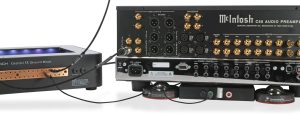
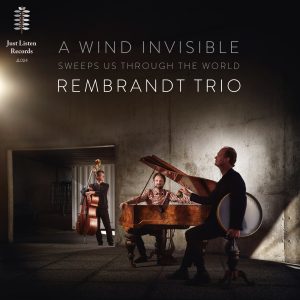 Initially, to evaluate the performance of the SR AGB SX, I picked the album “A Wind Invisible Sweeps Us Through The World,” a 192kHz 24-bit download by The Rembrandt Trio (Listen Records), as the first of two albums for the evaluation. The Rembrandt Trio features Rembrandt Frerichs (Pianist and Composer), Tony Overwater (Bass) and Vinsent Planjer (Drums and Percussion). “A Wind Invisible Sweeps Us Through The World” is the trio’s third album on Native DSD following their earlier releases, Same Self, Same Silence, and The Contemporary Fortepiano. The album was recorded by Channel Classics and Native DSD founder Jared Sacks, and it followed the label’s pattern of capturing live performances as simply as possible with no edits or overdubs. The result is a “live“ ambiance with a real sense of the musicians in the room.
Initially, to evaluate the performance of the SR AGB SX, I picked the album “A Wind Invisible Sweeps Us Through The World,” a 192kHz 24-bit download by The Rembrandt Trio (Listen Records), as the first of two albums for the evaluation. The Rembrandt Trio features Rembrandt Frerichs (Pianist and Composer), Tony Overwater (Bass) and Vinsent Planjer (Drums and Percussion). “A Wind Invisible Sweeps Us Through The World” is the trio’s third album on Native DSD following their earlier releases, Same Self, Same Silence, and The Contemporary Fortepiano. The album was recorded by Channel Classics and Native DSD founder Jared Sacks, and it followed the label’s pattern of capturing live performances as simply as possible with no edits or overdubs. The result is a “live“ ambiance with a real sense of the musicians in the room.
Andrew Everard of HiFi News writes, “The trio’s musical experiences on the road, from Bach to China and Armenia, are woven into beautifully innovative and involving pieces. The recording gives the players space to perform, and the instruments the ability to breathe and interact with the acoustic – it all sounds pretty glorious.“

Like the predecessor (SR AGB SE) I reviewed back in 2018, the new SR AGB SX reduced the background noise floor and signal compression but to a much higher level. I thought, “This is incredible,” and “It’s like a whole new sound.“ Instruments on the recording, like the piano, bass, drums, and percussion, emerged from a jet-black backdrop with 3-dimensionality, but now with the tone, timbre, and pitch spot on. The location of each instrument was also more defined within the soundstage. Precision is the one word I would use to describe the effect of the SR AGB SX, which was lacking in the previous editions of the SR Grounding Blocks. With the further reduction in noise and signal compression, instruments were separated more while maintaining a natural tonal balance. The benefit of removing internally generated RFI and EMI noise within grounded components was demonstrated. I want to say Hats off to Ted Denney and his gang for doing something special with the SR Active Grounding Block SX.
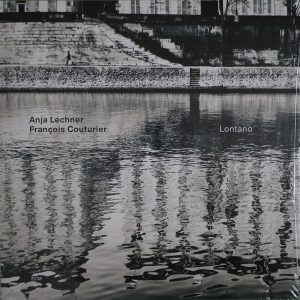 The second album selected to evaluate the effectiveness of the SR AGB SX was “Lontano,” a 96kHz 24bit (ECM records) download. The description of “Lontano” given by ECM reads: “Anja Lechner and François Couturier widen the scope of music. The duo sings in a voice of their own, be it with original compositions, improvisations or interpretations of works by Henri Dutilleux, Giya Kancheli, or Anouar Brahem, drawing upon a Bach cantata or an Argentine folk lament. Having internalized influences and repertoire the German cellist and the French pianist not only locate atmospheric and expressive connections among far-flung sources, but also create new music that reflects and refracts its inspirations.”
The second album selected to evaluate the effectiveness of the SR AGB SX was “Lontano,” a 96kHz 24bit (ECM records) download. The description of “Lontano” given by ECM reads: “Anja Lechner and François Couturier widen the scope of music. The duo sings in a voice of their own, be it with original compositions, improvisations or interpretations of works by Henri Dutilleux, Giya Kancheli, or Anouar Brahem, drawing upon a Bach cantata or an Argentine folk lament. Having internalized influences and repertoire the German cellist and the French pianist not only locate atmospheric and expressive connections among far-flung sources, but also create new music that reflects and refracts its inspirations.”
Nick Lee of Jazz News writes: “In this well-balanced program, the duo also play original compositions that sit perfectly alongside the work of others, and this is much in evidence in Franҫois Couturier’s ‘Flow’, with Lechner’s expressive arco cello lines tell the story and bring the melody to life against the backdrop of the piano accompaniment. At one point, roles change in the most subtle manner, as the piano takes the lead and the gently plucked strings of the cello lend a delicate support. If a relaxed, calm sense of lyricism prevails throughout this set, then Couturier’s composition ‘Tryptic‘ brings forth a new dynamic. Dark and brooding, the music adds another dimension to the duo’s work in another fascinating performance. With Lontano, Lechner and Couturier once again show the depth and range of their musical oeuvre with an album that moves on from the earlier album yet retains a freshness and vitality that is truly engaging.”
Engaging the SR AGB SX paid dividends in the truth of timber and sonic purity. The cello may be the singing instrument par excellence of its range, encompassing the entire span of male and female voices. The liquidity and image solidity of the cello played by Lechner and the piano played by Couturier drew me into the music like never before. The lack of grain and the ease of the sound further enhanced the emotional connection to the music. The separation between the cello and piano further added to the believability of the recording. Compared to the SR AGB SX, the SR AGB SE only touched the surface in these areas of sonic performance and never achieved the immediacy of the SX’s sound in my system. Switching off the internal active EM cell alone resulted in a compressed soundstage that was merely located between the speakers and a reduction of the microdynamic gradients and leading-edge transients.
 The third album chosen was “Lujon,” a 96kHz 24-bit download, with Atzko Kohashi on the piano, Frans van der Hoeven on the double bass, and Sebastiaan Kaptein on percussion (Sound Liaison). Kohashi writes: “There is nothing so mysterious as sound. You can’t touch, see, taste, or smell it. Yet music can stimulate all five senses; tonality creates temperature and color, while tempo and rhythm set the sound’s scent and taste. In the world of jazz, where improvisation is central, each of these elements are of vital importance to bring a performance to life. On this album, masterfully recorded by Frans De Rond, you can hear the touch of the piano keys sinking in, the movement of the foot pedal, the strokes of the bass strings, the vibration of the cymbals, and even the breath of the musicians, thus you experience what we, the musicians felt the moment the music was created.”
The third album chosen was “Lujon,” a 96kHz 24-bit download, with Atzko Kohashi on the piano, Frans van der Hoeven on the double bass, and Sebastiaan Kaptein on percussion (Sound Liaison). Kohashi writes: “There is nothing so mysterious as sound. You can’t touch, see, taste, or smell it. Yet music can stimulate all five senses; tonality creates temperature and color, while tempo and rhythm set the sound’s scent and taste. In the world of jazz, where improvisation is central, each of these elements are of vital importance to bring a performance to life. On this album, masterfully recorded by Frans De Rond, you can hear the touch of the piano keys sinking in, the movement of the foot pedal, the strokes of the bass strings, the vibration of the cymbals, and even the breath of the musicians, thus you experience what we, the musicians felt the moment the music was created.”
When the SR AGB SX was engaged, the sound was well-balanced and reverberant, and the overall ambiance pulled the performers into my listening space. Compared to the AGB SE, the AGB SX excelled at providing focused images, refining the musical tone, and enhancing the image density at the sound field extremes. Once you hear what the SR AGB SX does in your system, there is no going back to the AGB SE.
Conclusion
The SR AGB SX will get my vote for a Most Wanted Component award. You can choose many grounding blocks for your equipment, but I haven’t encountered a product that is as cost-effective and takes up little to no space as the SR AGB SX. The SR AGB SX is now an integral part of my reviewing system. Highly recommended.


Specifications:
Price: Synergistic Research Active Grounding Block SX, $2,995.00
Address:
Synergistic Research Inc.
11208 Young River Ave.
Fountain Valley, CA 92708
Website: https://www.synergisticresearch.com
Telephone: +1(949) 476-0000
Mike’s Associated Equipment:
Digital Front End
Fidelizer AirStream2 Router with battery power supply
AfterDark Project ClayX Roon KARMANN Music Server
AfterDark Project ClayX Giesemann Rosanna Network Bridge powered by Farad Super3 lps
AfterDark Double Emperor Crown Master Clock powered by Farad Super3 lps
Uptone Audio JS-2 Power Supply for EtherREGEN and Google Fiber Router
Uptone Audio EtherREGEN
Waversa Reference LAN Filter
Ayon Audio S-5 Network Player/Preamplifier
Amplification
Ayon Audio Odin SET stereo amplifier III Build 4 as primary
First Watt SIT-1 monoblock amplifiers
Loudspeakers
Cube Audio Nenuphar loudspeakers
Cabling
Enterprise Coating Holographic 3D6 power cords x 7
Silversmith Audio Fidelium speaker cables
Synergistic Research Galileo SX interconnect
Synergistic Research Atmosphere High-Definition Grounding cables x 5
Wireworld Platinum Starlight 8 Twinax Ethernet x 3
AfterDark Ethernet for EtherREGEN</span
Accessories
Synergistic Research PowerCell SX</span
Synergistic Research HFTs on loudspeakers, Wide Angle HFTs on wall
Synergistic Research Active Grounding Block SE
Synergistic Research Black Box
LessLoss Blackbody ambient field conditioner x 2</span
Marigo Audio Lab L3 Platforms x 6
Marigo Audio Lab E3 Mystery Feet x 5 sets of 3
Marigo Audio Lab ZSD-31 and ZSD-41 SuperDots x 6 sets of 3
Custom-built maple wood rack
Marigo Audio Lab Window Tuning Dots
Herbie’s Audio Lab Preamp Ultrasonic tube dampers
Synergistic Research UEF Black duplexes
Synergistic Research Blue fuses
GIK Acoustics 4A Alpha Pro Series Bass Trap Diffusor/Absorber x 4 (side wall)
GIK Acoustics 242 Acoustic Panel x 4 (ceiling and corner)
Stillpoints Apertures x 6
Stereo Times Masthead
Publisher/Founder
Clement Perry
Editor
Dave Thomas
Senior Editors
Frank Alles, Mike Girardi, Russell Lichter, Terry London, Moreno Mitchell, Paul Szabady, Bill Wells, Mike Wright, and Stephen Yan,
Current Contributors
David Abramson, Tim Barrall, Dave Allison, Ron Cook, Lewis Dardick, John Hoffman, Dan Secula, Don Shaulis, Greg Simmons, Eric Teh, Greg Voth, Richard Willie, Ed Van Winkle, Rob Dockery, Richard Doron, and Daveed Turek
Site Management Clement Perry
Ad Designer: Martin Perry







Be the first to comment on: Synergistic Research Active Grounding Block SX by Michael Girardi